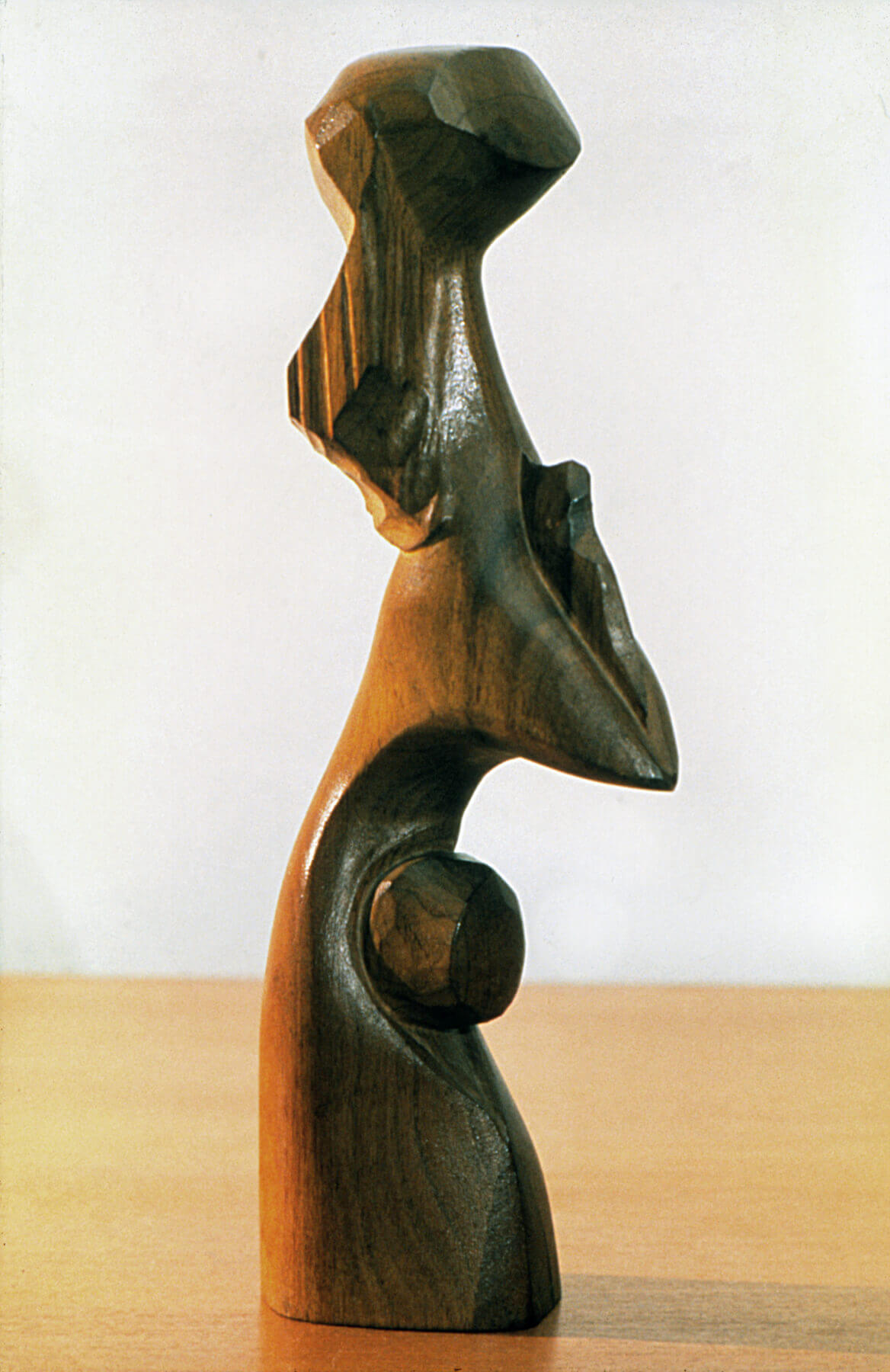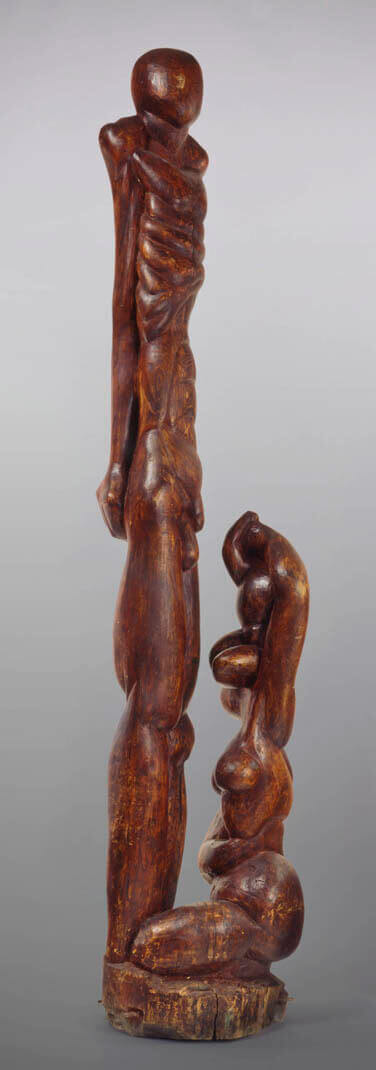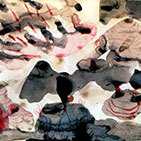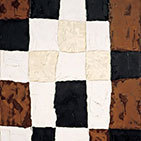The Nun 1951

Paul-Émile Borduas, The Nun (La religieuse), 1951
Wood sculpture, H 31.6 cm
Private collection

For a brief period in the winter of 1951, Borduas interrupted his two-dimensional work to devote himself to wood sculpture, producing nearly a dozen of these small statues. He writes to his friend Dr. J.E. Martin in Toronto in February, apologizing for not having replied sooner: “A sculpture—I’ve been making wood sculptures these days—took up all my time.” Small in scale, these pieces are just 28 to 35 centimetres high, with the exception of Egypt, at 43 centimetres. Most are named after countries: United States, Japan, Egypt, Greece, Russia, England, and, of course, Canada. The country-inspired names obscure an inherent eroticism. The Nun, which seems to describe a Catholic nun in prayer, is more directly erotic and controversial.
Writing to the collector L.V. Randall in February 1951, Borduas gives titles to four recently completed sculptures: “Petite paysanne au pied d’âne” (Little peasant girl with donkey’s foot), “Les deux seins haut perchés” (Both breasts perched high), “Le cas feminine” (The feminine case), and “Construction érotique” (Erotic construction). It is not known what prompted him to change the titles when he exhibited them in his studio from June 2 to 4, 1951. Did he wish to spare the sensibilities of his wife? Avoid shocking his children? Whatever his reasons, the allusions are mostly explicit enough that the country titles fool no one.
With this group of sculptures, which give volume to the objects in his Automatiste paintings, Borduas opened up the field of non-representational sculpture in Quebec. Although humble in scale, they foreshadow the path that sculptor Armand Vaillancourt (b. 1929) was exploring at that time; his monumental Tree of Durocher Street dates from 1953–54. The Family by Robert Roussil (1925–2013) dates from 1949; it caused such a scandal that the police withdrew it from circulation. Whereas Roussil’s work was largely figurative, Borduas pursued a more abstract vein.

 About the Author
About the Author
 More Online Art Books
More Online Art Books
 Acknowledgements
Acknowledgements